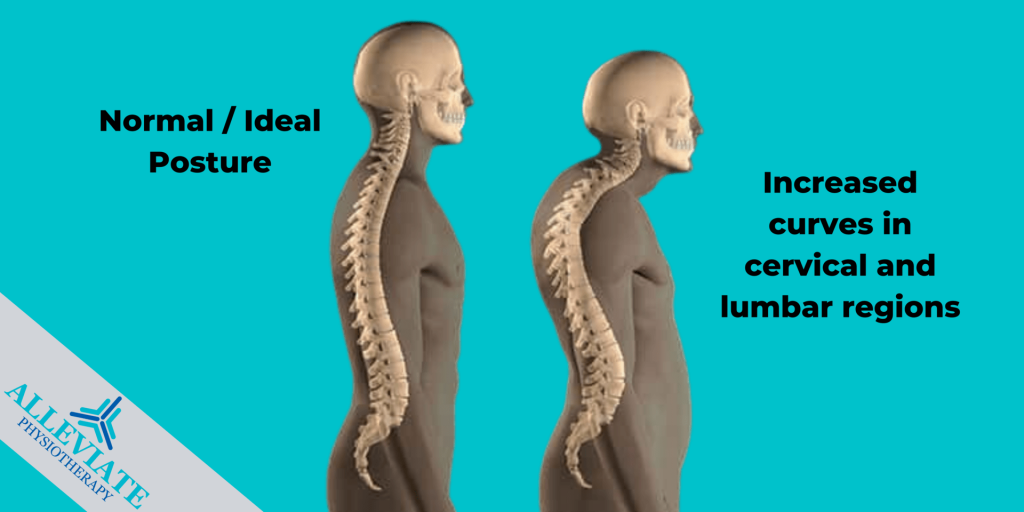
Postural Syndrome
Pain in the neck and upper chest region or pain in the lower back or radiating pain down the legs? Come visit our clinics at Mississauga, Etobicoke or Clarkson GO, and find out more about postural syndromes.
What are postural syndromes?
Postural syndromes are a group of conditions that involve abnormalities in the body's posture and alignment, resulting in pain, discomfort, and functional limitations. These conditions usually affect people of all ages, and are often caused by factors such as poor posture, muscle imbalances, and injuries.
Some common types of postural syndromes include:
- Upper Cross Syndrome: This condition involves tightness in the chest and neck muscles, and weakness in the upper back and shoulder blade muscles. It can lead to neck pain, headaches, and shoulder pain.
- Lower Cross Syndrome : This condition involves tightness in the lower back and hip muscles, and weakness in the abdominal and gluteal muscles. It can lead to lower back pain, hip pain, and poor balance.
- Forward Head Posture: This condition involves a forward positioning of the head and neck, which can lead to neck pain, headaches, and shoulder pain.
- Flat Feet : This condition involves a loss of arch in the feet, which can lead to foot pain , knee pain
The best treatment for postural syndromes involves physiotherapist Consultation to find the impairment after doing the thorough posture examination and start working with exercises to improve muscle imbalances, stretching to improve flexibility, and lifestyle modifications to improve posture and alignment. It is important to consult a physiotherapy clinic near you if you are experiencing pain or discomfort related to posture. Early intervention can prevent further complications.
What are the causes of postural syndromes?
Postural syndromes can be caused by a variety of factors, including:
- Poor posture: A common cause of postural syndromes is poor posture habits, such as slouching or sitting in a hunched position for extended periods of time. This can result in muscle imbalances and strain on the muscles and joints.
- Muscular imbalances: Muscular imbalances can develop over time due to a variety of factors, including repetitive motions or overuse of certain muscles, inactivity or lack of exercise, and injury.
- Joint dysfunction: Joint dysfunction can occur due to injury, wear and tear, or degenerative conditions. This can result in changes in posture and alignment, leading to postural syndromes.
- Structural abnormalities : Structural abnormalities, such as scoliosis or a leg length discrepancy, can result in postural syndromes.
- Neurological conditions : Certain neurological conditions, such as Parkinson's disease or cerebral palsy, can affect posture and alignment. Check out our Neuro Physiotherapy services
- Aging : As one ages, changes in muscle tone and strength, as well as wear and tear on joints, can lead to postural syndromes.
It's important to identify the underlying cause of a postural syndrome in order to determine the best course of treatment. A physiotherapist is the first line of consultation for any postural syndromes. Finding the right physiotherapist near you and consulting one can help identify the underlying problem.
Physiotherapy can be a very effective treatment approach for postural syndromes. A physiotherapist can work with individuals to develop a personalized treatment plan to address the underlying causes of their postural syndrome, and to help alleviate symptoms.
Here are some ways that physiotherapy can help with postural syndromes:
Exercises: A physiotherapist can prescribe specific graded neuromuscular exercises to improve muscle imbalances and strengthen weak muscles. This can help to improve posture and alignment, and reduce pain and discomfort.
Manual therapy: Manual therapy techniques, such as massage, joint mobilization, and stretching, can help to release tight muscles, improve joint mobility, and reduce pain.
Education: A physiotherapist can educate individuals on proper posture and body mechanics, and provide tips on how to avoid positions or activities that exacerbate symptoms.
Modalities: Modalities such as heat or ice therapy, Laser therapy, and electrical stimulation can be used by physiotherapists to relieve pain and promote healing.
Postural re-education: A physiotherapist can work with individuals to re-educate their bodies on proper alignment and posture, which can help to alleviate pain and discomfort.
Physiotherapy is a very effective treatment option for postural syndromes, helping to reduce pain, improve posture and alignment, and prevent further complications. Our goal is to help clients relieve pain, improve mobility, and prevent a re-injury. We believe in personalized treatment plans that take into account our client’s specific needs and goals for them to lead a pain free life, with better mobility.
Don’t want to live with pain?
GET IN TOUCH
Postural Syndromes bothering you? Come find the perfect care for your neck with our Top Rated Therapists that are trained to help you recover faster. Check out our operating hours at our locations.
Check out our Client Testimonials
Don’t Wait – Just Alleviate





